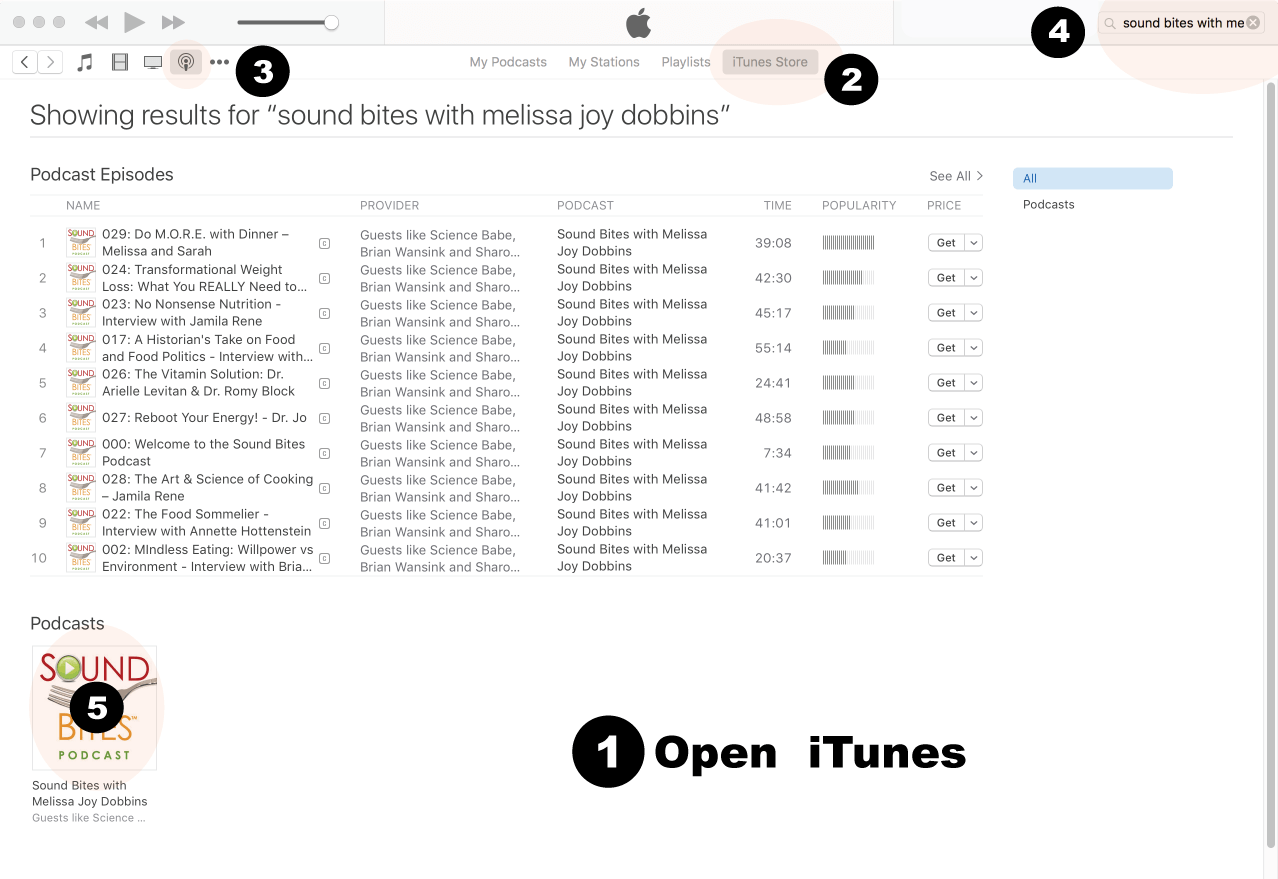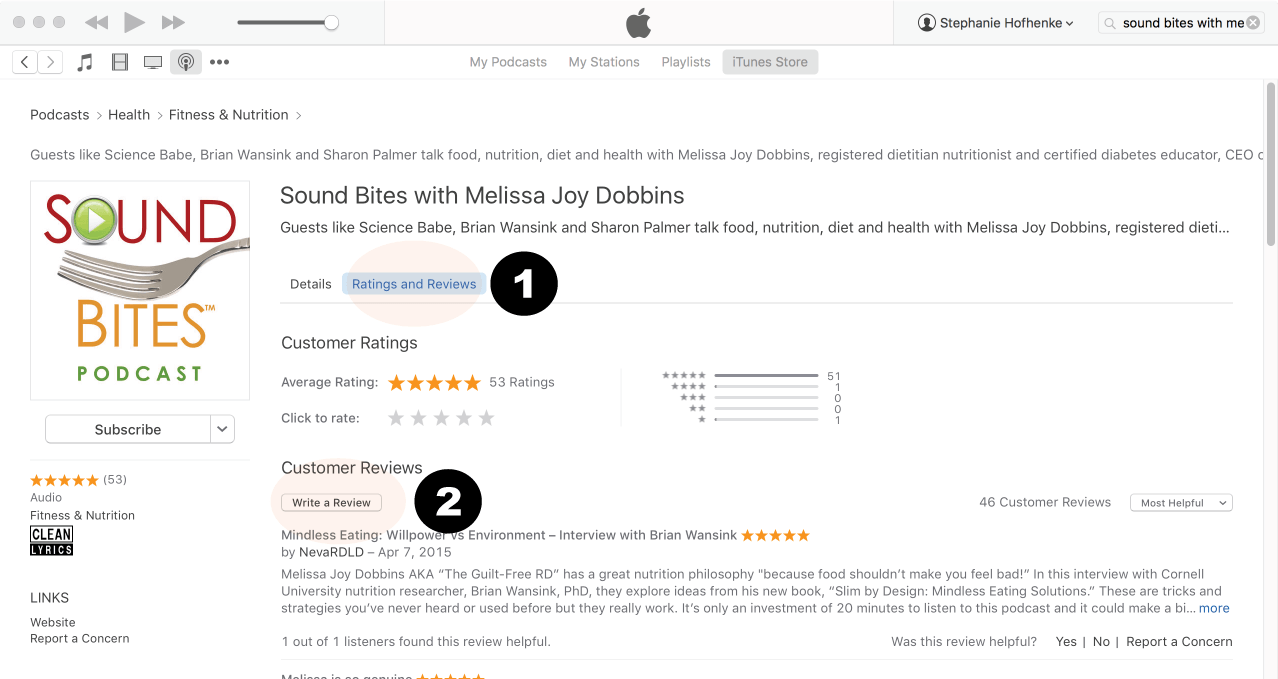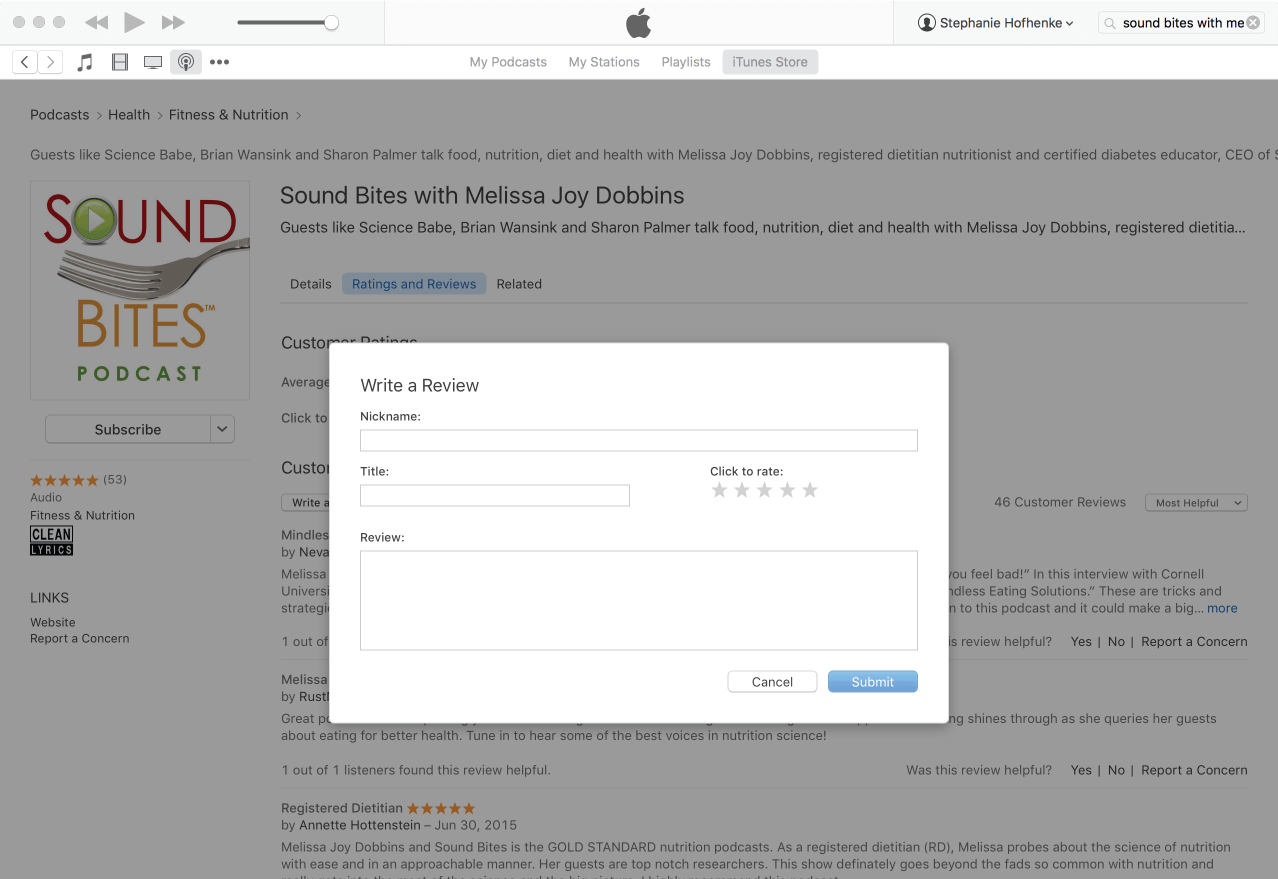Deconstructing a TV segment – Act I of II
Have you ever wondered “What really goes into a live TV interview?” or “What are the steps involved and how many hours does it take?” On the heels of my most recent TV interview, I thought I would share some behind the scenes information In hopes of providing some helpful tips for other RDs.
These are most of the steps involved along with some of my personal tips on how to prepare. Since I’ve been doing TV interviews on a regular basis in Chicago since 2000 (sometimes one segment a week), I kind of have it down to a “science” – which does not in any way mean it is easy, or quick, or a guaranteed success! Even though I’ve done hundreds of TV segments, I still learn something new every time. How many hours do you think goes into a TV segment? Take a guess and I’ll let you know at the end of Act II.
Here’s a link to the final product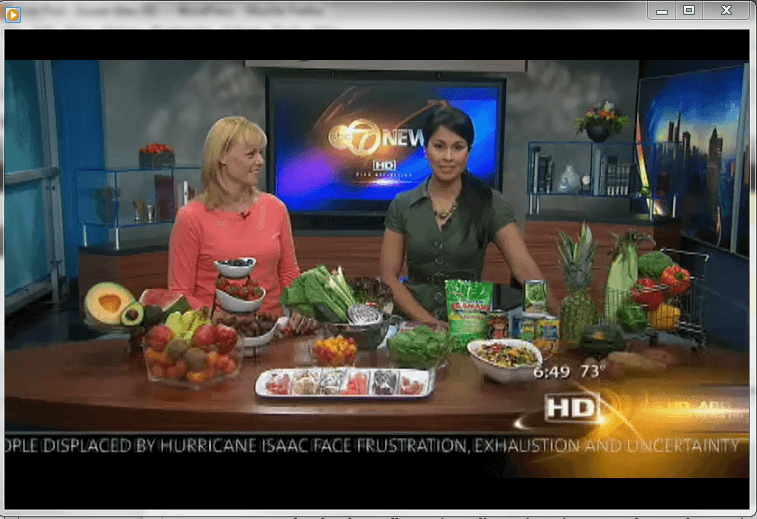
Melissa’s Top Ten Tips (for before the day of the segment)
WEEKS BEFORE THE SEGMENT:
1. Come up with an idea that is “news”-“worthy.” Don’t just think about what’s hot in the media – ask yourself what the media is NOT talking about that you think they should be talking about. What are you passionate about sharing with viewers? For this segment I wanted to address “Produce & Pesticides” because I feel very strongly that people have enough “barriers” to eating fruits and vegetables and I wanted to show viewers some easy ways to increase their intake.
2. Pitch your idea(s) to the media via phone and/or email. Don’t be nervous about doing this – it’s very similar to picking up the phone and calling a doctor with your tube feeding recommendation. Just like the doctor, the producer is very busy and doesn’t have much time for someone who isn’t clear, concise and compelling.
SEVERAL DAYS TO A WEEK BEFORE THE SEGMENT:
3. Determine what you want to say (3 messages) and what you want to show (food and props). Don’t skimp on the visuals! They are just as important as your words, and are necessary to support your messages. (Watch my “How To” video here on Food & Props 101). Pay special attention to creating messages that are based on “sound science.” Utilize resources such as the Academy’s Position and Practice Papers and the Evidence Analysis Library (I attended an excellent training on the EAL and will be posting some helpful info on my Tips & Resources page soon). Also make sure your messages include “smart nutrition” tips and highlight “good food!” I decided on these 3 key messages and supporting visuals, including a recipe from fellow dietitian Sharon Palmer.
4. If welcomed by the TV station, write an article for their website that can be posted along with the video of your segment after your appearance. Be sure to include your main messages and links to more information, recipes, etc. and send it to the station several days in advance.
A DAY OR TWO BEFORE THE SEGMENT:
5. Finalize your key messages. Stick with only THREE messages. I developed a worksheet that helps me organize my thoughts and helps me enhance my messages with stories, analogies, examples, statistics, etc. If you have more than three messages, I promise you it will be difficult to work the last one in. Gets me every time I try!
6. Notify friends, clients and colleagues that you’ll be on TV so they can watch and let others know, too. Sometimes I’ll post a question on facebook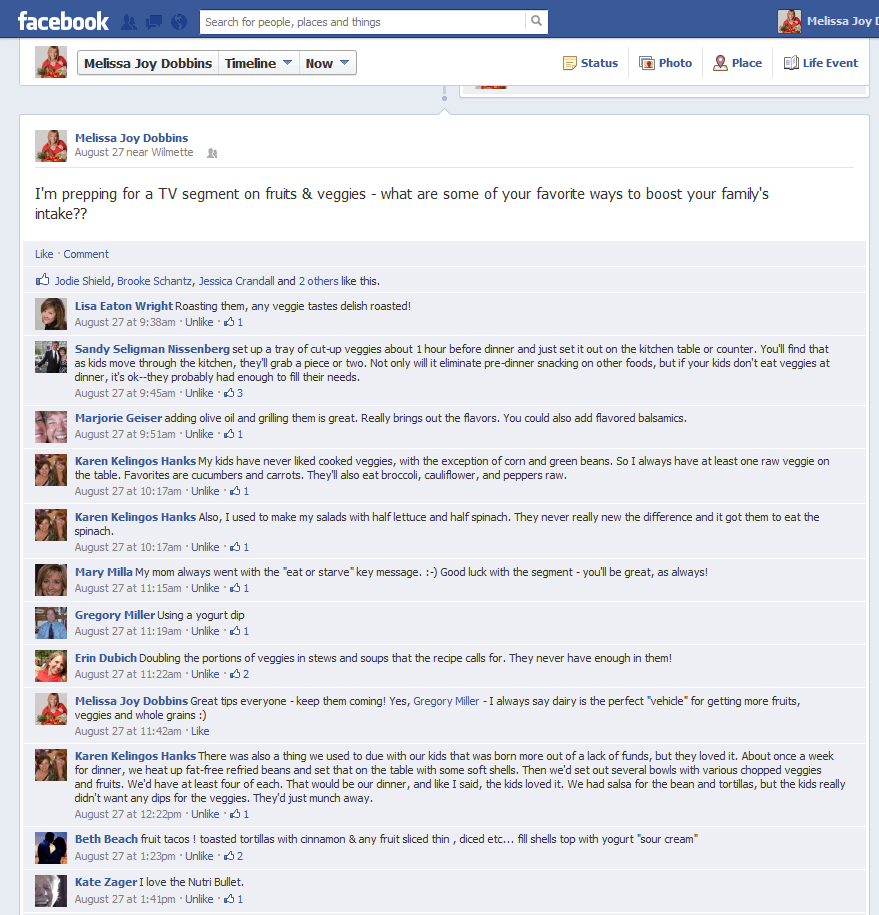
7. Get your food and props ready. Put together a grocery list and go shopping. I tend to shop at larger stores for these occasions because it saves me time driving around to other stores trying to find everything I need. Pick out your props, plates, etc. This can be from your own cupboards, or you may decide you need to buy something or borrow from friends or neighbors if you don’t have exactly what you need. I’ve collected lots of serving dishes, glasses, pitchers and such over the years. My favorites are plastic items that look like they are glass or china – I don’t have to worry about them breaking, they are lighter to carry and they still look great on TV.
8. Set up your display on your kitchen counter or dining room table. Trust me, you really do not want to be figuring this out just minutes before the actual segment! Try and group your food/props into 3 sections that go along with your 3 messages. This is not always practical, but is nice when it works out. 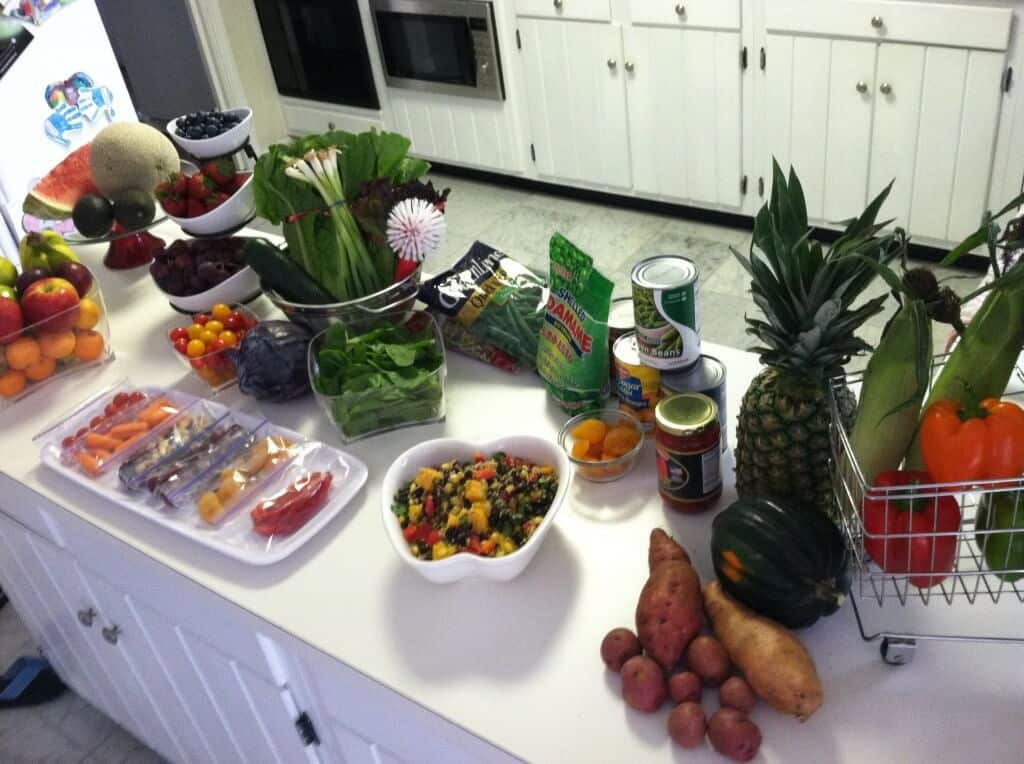
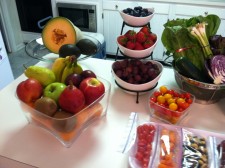

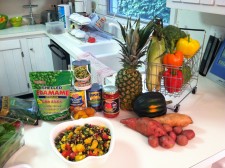
THE DAY/NIGHT BEFORE THE SEGMENT:
9. Practice presenting your greeting/intro, 3 key messages and closing points many times and then revise your messages and display based on how well it’s flowing or not flowing. Figure out the best way for you to remember your messages. I’ve learned for myself that repeatedly writing out what I’m going to say helps me the most. How do you remember the messages without sounding scripted? Internalize – don’t memorize! Have a friend or family member record you doing a practice run to be posted later on You Tube or facebook (check out my practice video here on You Tube). If no one is available to help you, set up a tripod. The video can be very informal and you can have a lot of fun with it if you want. Either way it’s a great way to practice. Even if you don’t post it on You Tube or facebook, you should watch it so you can improve your messages, hand gestures, eye contact, food/props, etc.
10. Don’t forget to set your DVR and/or DVD. I recommend both because you’ll want to watch it in HD (the DVR) so you can see what the rest of the world saw, but you’ll also want a copy on DVD in case you want to use it for a client or a job application or to show during a presentation (or just for showing to family at the holidays!). These days almost all segments will end up online but you can’t always count on that. I’ve had segments that didn’t get posted online for various reasons, but at least I had my DVD copy. If they do end up online you’ll want to learn how to download the file to your computer so you have a copy.
At this point, you really need to get some rest. You’ll need your beauty sleep since you’ll be in HD the next day! Stay tuned for ACT II to find out how things go on the day of the segment! For more insider tips and tricks contact me at Melissa@SoundBitesRD.com!






